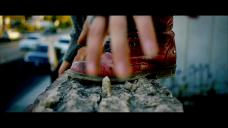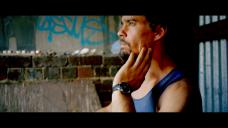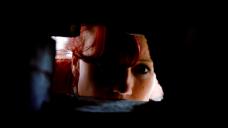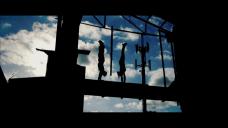
-
@GH2_fan What lunalobo75 said, plus you could also try blurring just the chroma channels slightly before pulling your key, that can help with artifacts too (as in the 8 bit related artifacts).
-
Encountered a strange issue with Quantum X v3b. I have two custom settings, 24p on C1, 60p on C2. I did a shoot and switched to C2 a few times, with the shutter on 1/125 and the clips are somehow 60i, not all of them, just a few. Related to the hack?
-
I just shoot my sons basketball game with orion v4b, and everything worked really fine with sandisk extreme hd video card. Trancend class 10 card also worked, but gave me few motion errors. Picture quality was awesome like allways. I was just suprised how well tohose cards worked.
-
Somewhere in this thread or the previous version -- some people mentioned wanting a post v11 comparison of the GH2 picture profiles. I did this for my own purposes -- but for those of you interested…….
GH2 PICTURE PROFILE COMPARISONS WITH EMPHASIS ON NOISE CHARACTERISTICS
Standard may be the best setting. It was probably designed around the strengths of the camera.
Cinema appears to be Standard with the brightness lowered and contrast slightly increased -- designed for consumers producing major motion pictures who don’t know how to lower the brightness or increase contrast.. Noise is slightly less apparent than with Standard -- exactly what happens when you lower the brightness and increase contrast.
Dynamic appears to have saturation and contrast slightly boosted over Standard -- perhaps a kind of post produced look for consumers using Windows Movie Maker. Relative to noise -- light shadows appear better than Standard, dark shadows appear worse than Standard.
Smooth appears to have levels slightly boosted (slightly brighter). Seems to handle noise well -- almost identical to Standard.
Nature is identical to Standard in every way -- except the greens (and probably a few other shades) appear slightly more saturated.
Nostalgic is the “Cine D” of this consumer camera -- except Panasonic added an aged yellow paper tint to it -- because somehow aged yellow paper reminds you of your youth. Cine D, from the Panasonic broadcast line, is a gamma curve that was pushed up as far as they could go within reason. In theory this means extended dynamic range. In reality it means extended dynamic range with an ass-load of noise. So, nostalgic means the most dynamic range this camera can give along with the biggest ass-load of noise this camera can give -- along with that tint of aged yellow paper because it reminds you of your youth back in the 1930’s. Also, they appear to have slightly desaturated the colors to reduce chroma noise, as if that matters. Finally, blue noise appears to be worse than red noise in Nostalgic -- and this is different from every other picture profile (red is usually the nightmare on this camera).
Vibrant wins the prize for the unexpected winner in this test. Meaning, I expected crap -- and it isn’t. Vibrant is 70% Canon DSLR and 30% Sony Cinematone. Meaning -- if you need to match your GH2 to a Canon DSLR -- use Vibrant at -1 on the saturation. Normally you’d expect chroma noise to be worse with anything more saturated -- but for some reason -- Vibrant seems to handle noise very, very slightly better than Standard. Also, levels appear to be almost identical to Standard -- so they haven’t cut down on the dynamic range by spiking contrast. -1 on the saturation appears to be the sweet spot. -2 isn’t bad, and you’d have a hell of a time telling it apart from an HPX170 with 4:2:2 color.
Standard B&W appears to have the widest latitude of the black and white profiles.
Dynamic B&W is black and white with a higher contrast.
Smooth B&W wins the award for the biggest pile of crap on the GH2. I guess Panasonic thought they needed a profile that emulated Thomas Edison's film stock. It’s high contrast to an extreme that crushes details.
-
@onionbrain, thank you very much for your tests. You've been very helpful. In my own tests with Driftwood settings, my eyes were seeing those differences in picture profiles but I couldn't describe it better than your analysis. Thanks again for your work. I also agree red channel is a nightmare!
-
@onionbrain Excellent tests and analysis, many thanks for this.
-
@onionbrain loving it thank you very much
-
Thank you @onionbrain
-
Here are some timeline stills from a shoot yesterday using QuantumX 4d Orion & the 20mm 1.7
Had many write speed errors, was using 32GB Sandisk 30MBS cards. Perhaps it was the colour/texture demands of the environment, as there wasn't a lot of movement with the camera or by the actors.
Video to follow shortly.
Thanks again for all the hard yakka Driftwood, Vitaly et al.
B.

 frame-000000.jpg1920 x 1080 - 269K
frame-000000.jpg1920 x 1080 - 269K
 frame-000003.jpg1920 x 1080 - 249K
frame-000003.jpg1920 x 1080 - 249K
 frame-000006.jpg1920 x 1080 - 129K
frame-000006.jpg1920 x 1080 - 129K
 frame-000009.jpg1920 x 1080 - 164K
frame-000009.jpg1920 x 1080 - 164K -
@onionbrain A very clear and useful analysis. Thank you !
-
@driftwood, after adjusting the Q settings down to 4 as you described, 720p SH is now working perfectly, even panning around outside in bright light with a lot of trees etc. The bit rate maxed out at about 58,000, still not as sharp as 24p but still very good image. Even with the lower bitrate 720p I was blown away with the sharpness and detail of an interview shots. Can't wait to test it out with low light, etc.
-
Eaven i deside profile usually acording light and some other things. This is really handy. Thanx.
-
that Sedna looks good; very interesting – can't wait to try 'er out.
-
You can dial a lot of the yellow out of nostalgic by using a custom WB. A few notches to blue, and a notch down for magenta as GH-X can sometimes have a slight green cast.
-
@onionbrain Really well done, thank you.
Is NOSTALGIC (with tweaked WB) the way to go at low ISO levels, in order to maximize dynamic range, and then use VIBRANT (with tweaked saturation) for high ISO levels?
Or do the noise issues dominate, and are you suggesting VIBRANT as the best overall film mode for all ISO levels?
Again, thank you.
-
Perhaps it was the colour/texture demands of the environment, as there wasn't a lot of movement with the camera or by the actors.
Unless you were shooting 720p, the amount of movement is irrelevant. Orion is an all-intra setting; it doesn’t rely on the neighboring frames for prediction. Each frame is self contained. Virtually, a series of still JPEGs. The only factor that puts additional stress on the encoder is the number of details and high-contrast areas in any given frame.
In this respect, static shots are prone to cause more write errors. Movement introduces motion blur, which reduces sharpness and the number of details in a frame, making the encoder’s job easier.
Beautiful stills, by the way. Looking forward to see a few clips from your project!
-
Did anyone test Cluster vs Orion...?
-
@Frame I use Cluster and it works well even with HBR 25p PAL very stable ... vs ORION it uses less resources ... (SD space)
-
why can i only record 2min 4 second clips on my 32gb card in mjpeg HD mode?
-
@onionbrain your post needs its own thread. Great Job mate!
-
I just did a quick test to see the behaviour of the camera with the new Quantum settings in terms of posterization. I shot an out of focus extreme close up of my face (Voigtlander 25 0.95 at 0.95) with Pictoris CBR Orion Matrix, Orion V4B and Orion V4D with the tree Dark Matter matrices. Sadly, I got similar levels of nasty posterization with every setting. I used almost every picture profile with everything at -2. This was done at ISO 160. When I bumped it to ISO 800, the noise acted as dithering and the posterization wasn't visible anymore.
It was an extreme test. In real shooting situations with the GH2 you only get posterization from time to time but still I thought I would get better results with the new matrices. Somehow I always thought that the excessive sharpeness of the stock GH2 was the reason behind the GH2 posterization problem (this camera can yield a posterized image where other 8 bit cameras won't).
In any case, the Quantum settings are amazing. Thanks Nick for keeping making a great camera even greater!
P.D.: I also tested Quantum V4D Dark Matter V3 with a 16 Gb Sandisk Extreme 30mb UHS-I and tried to get a card write error the best that I could (lots of movement, intricate textures, etc) but the camera only stopped recording when reached the 4 Gb limit. Will do more tests and keep you posted.
-
@atticusd are you shooting at 24p or PAL 25p ?
-
Driftwood magic continues and the Master behind the scenes continues to dial in perfection. So everyday the patches mutate into something more amazing, so lets continue to support the foundation of this site. Give money and stop using the questions laced with, When. We have the tools. The Specs (Quantum X (v4d Orion) CBR with 'Dark Matter v1 Shot 24m F 1.2, ISO 160, Dynamic, @ 50th. Pan using Weifeng Video sticks and Fluid head. (Cheap, but effective) Hard light, polarized. Pulled from the SanDisk 16Gig, 30MB, Class 10. Zero problems... replay, on board camera. This is the ONE. Bit Rate 138,800..... HBR...
-
Futher Mucker Damn, that looks good.
Posterization certainly appears to have improved. As @atticusd mentioned, it's there under extreme conditions. But.... It's an improvement for sure.
-
@Kihlian All the tests were done in 24H (1080 24p).
Howdy, Stranger!
It looks like you're new here. If you want to get involved, click one of these buttons!
Categories
- Topics List23,993
- Blog5,725
- General and News1,354
- Hacks and Patches1,153
- ↳ Top Settings33
- ↳ Beginners256
- ↳ Archives402
- ↳ Hacks News and Development56
- Cameras2,368
- ↳ Panasonic995
- ↳ Canon118
- ↳ Sony156
- ↳ Nikon96
- ↳ Pentax and Samsung70
- ↳ Olympus and Fujifilm102
- ↳ Compacts and Camcorders300
- ↳ Smartphones for video97
- ↳ Pro Video Cameras191
- ↳ BlackMagic and other raw cameras116
- Skill1,960
- ↳ Business and distribution66
- ↳ Preparation, scripts and legal38
- ↳ Art149
- ↳ Import, Convert, Exporting291
- ↳ Editors191
- ↳ Effects and stunts115
- ↳ Color grading197
- ↳ Sound and Music280
- ↳ Lighting96
- ↳ Software and storage tips266
- Gear5,420
- ↳ Filters, Adapters, Matte boxes344
- ↳ Lenses1,582
- ↳ Follow focus and gears93
- ↳ Sound499
- ↳ Lighting gear314
- ↳ Camera movement230
- ↳ Gimbals and copters302
- ↳ Rigs and related stuff273
- ↳ Power solutions83
- ↳ Monitors and viewfinders340
- ↳ Tripods and fluid heads139
- ↳ Storage286
- ↳ Computers and studio gear560
- ↳ VR and 3D248
- Showcase1,859
- Marketplace2,834
- Offtopic1,320












